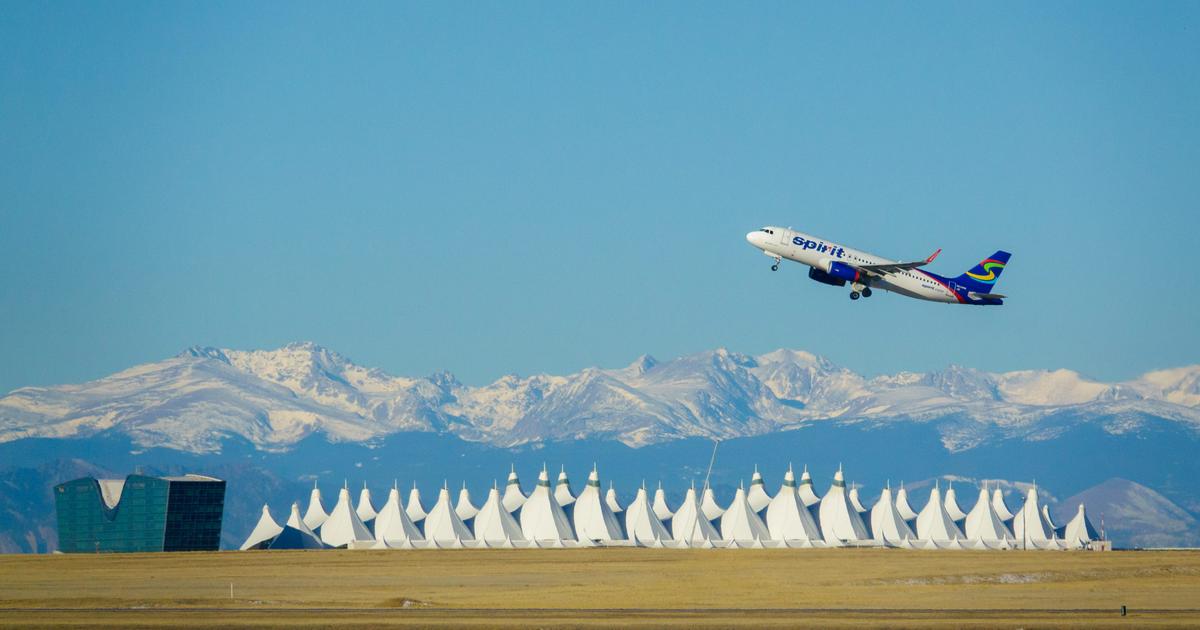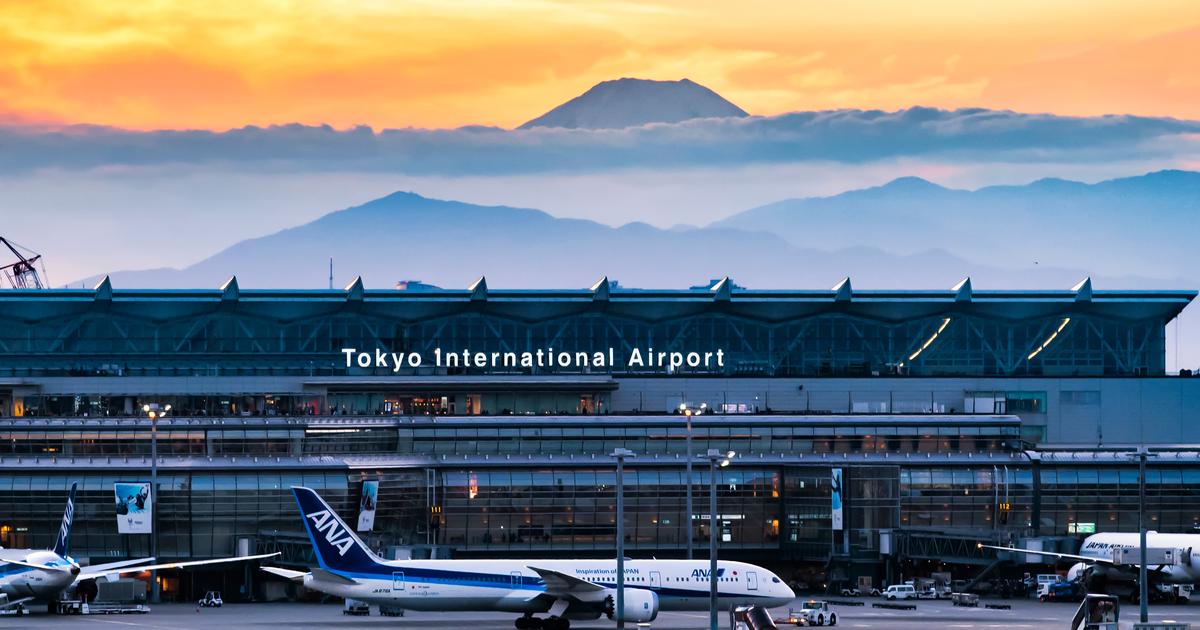Between the registration formalities, the constraints of going through security and waiting at immigration, airports are not places that make you want to linger.
Here are 10 airports that are exceptions!
From Vancouver to Tokyo, via Madrid and Bombay, these 10 airports have been designed to add spice to travel, with architectural concepts that stand out.
Plan to arrive early to take the time to explore them!
Read alsoToo popular?
Airport lounges face new challenges
1. The most forested: Adolfo Suárez Madrid-Barajas Airport in Madrid (Spain)
Terminal 4 at Madrid airport was designed by the architectural firm Richard Rogers, creator of the Pompidou Center in Paris and the headquarters of Lloyd's in London.
Jean-Pierre Dalbera
The first airport in Spain in terms of traffic, passengers and freight, gained new momentum with the opening of its Terminal 4 in 2005. The last terminal, whose cost reached one billion euros, recreated an endless canopy undulating covered with wood.
This huge but warm hall is considered to be the largest structure in Europe, with more than 1.2 million m²!
To see:
between Terminal T1 and the car park, you will come across
The Abduction of Europe
, a surprising sculpture created by Fernando Botero.
Read alsoWhat to see, what to do in Madrid: the essentials
2. The northernmost: Oslo-Gardermoen airport in Oslo (Norway)
Oslo Airport takes advantage of Scandinavian design principles.
Ivan Brodery / NORDIC Office of Architecture
Framed by huge bay windows, Oslo Airport is a chameleon that adapts to the seasons, depending on the light and the colors outside.
The airport is directly inspired by local architecture, highlighting fir and stone.
The whole is intended above all to be faithful to the Nordic tradition of well-being, by offering a stress-free journey for passengers.
A little extra: no announcements sound near the boarding gates.
To see:
at the entrance, salute
Utkast
, the amusing sculpture of a man launching a paper airplane.
See also48 hours in Oslo, our guide for a weekend in the green city
3. The easternmost: Marrakech-Menara International Airport (Morocco)
Marrakech airport is Morocco's second largest airport in terms of traffic, behind Casablanca.
Kevinbeets1995
Rebuilt in 2008, Terminal 1 at Marrakech airport boldly revisits the traditional architecture of Moroccan palaces.
The facade and the roof combine motifs from Islamic art and futuristic shapes.
Same approach for Terminal 3, inaugurated in 2016 to replace Terminal 2. In addition to the ornate facade, the entrance to the new terminal is through an 18-meter-high glass dome.
To see:
in Terminal 1, locate the Bedouin tent and sit comfortably on a sofa to enjoy a mint tea.
Read alsoWhat to do and what to visit in Marrakech?
Our essentials, from the new world of ornamental arts to the Agafay desert
4. The most Western: Denver International Airport (USA)
Denver Airport author Curtis Fentress began his career with famed architect Ieoh Ming Pei.
Denver International Airport
Leitmotif of Fentress Bradburn Architects, the firm behind the Denver airport design: “use context to create identity”.
The structure that crowns the terminal therefore evokes both the snow-capped peaks of the Rocky Mountains and the teepees of the First Nations Indians.
To go from the main terminal to the boarding gates, a spectacular pedestrian bridge offers a breathtaking view of the tarmac.
To see:
a statue pays homage to Jack Swigert, one of the astronauts of the Apollo 13 mission, originally from Denver.
5. The airiest: Wichita-Eisenhower National Airport in Wichita (USA)
Wichita Airport has its Aviator Café, the café for aviators.
Art Davis
In the heart of Kansas, the city of Wichita likes to define itself as the aviation capital of the world.
In 1916, the city witnessed the beginnings of the Cessna company before hosting the American factories of Airbus and Bombardier.
The airport pays homage to this heritage with an architecture inspired by the structure of an airplane.
The check-in counters, for example, are covered with a long wing, with its inclined shutters.
What to see:
the terminal aisles host an exhibition dedicated to the history of aviation in Wichita.
Read alsoTravel conditions in the United States: what you need to know to get there
6. The most cultural: Vancouver International Airport (Canada)
Vancouver Airport illustrates the tales and legends of Native American First Nations.
Blake Handley
Vancouver airport is worthy of an art museum!
From the check-in counters to the boarding gates, the airport displays a formidable collection of Native American artwork on the theme of land, sea and sky.
The opportunity to discover local legends, in particular that of the crow who placed the sun in the sky.
We also fell in love with this large totem almost 11 meters high intended to “celebrate theft”.
What to see:
The airport maintains a massive 114,000-litre aquarium that recreates BC marine life.
Read alsoTravel conditions in Canada: what you need to know to get there
7. The most metaphorical: Chhatrapati Shivaji Maharaj International Airport in Bombay (India)
Terminal 2 at Mumbai airport is dedicated to international flights.
innocentbunny
Inaugurated in 2014, Terminal 2 at Bombay airport was designed by the prestigious American architectural firm Skidmore, Owings & Merrill, author of the Burj Khalifa tower in Dubai and the NATO headquarters in Brussels.
The terminal building is supported by towering futuristic pillars that symbolize both traditional Indian canopies and the feathers of a peacock, the national bird.
What to see:
The terminal is home to the Niranta Airport Transit Hotel, a small hotel with 32 rooms for passengers in transit.
Read alsoBelgium by bike: four extraordinary cycle paths in the province of Limburg
8. The most natural: Changi International Airport in Singapore (Singapore)
Singapore Airport's Rain Vortex drops from a height of 40 meters.
Supanut Arunoprayote
With its lush plant walls and palm trees, Changi Airport gives the impression of walking through a tropical garden.
The flowerbeds are even home to myriads of butterflies, which flutter among the passengers.
Also take the time to browse the shopping center that connects the 3 terminals and admire the "Rain Vortex", the highest indoor waterfall in the world, surrounded by a formidable jungle.
To see:
on level 2 of Terminal 4, do not miss the film which animates the reconstructions of the facades of Singapore in the 1930s.
Read alsoIn Singapore, a high-tech exhibition immerses us in the fabulous universe of Avatar
9. The most sprawling: Beijing Daxing International Airport (China)
Because of its shape, Beijing-Daxing Airport is nicknamed “Beijing Starfish”.
Arne Museler
Opened in 2019, the Chinese capital's second international airport is the largest airport in the world, with 7 runways.
A giant designed by the famous architect Zaha Hadid in a resolutely futuristic style.
The organization of the spaces is however based on the ancestral principles of Chinese architecture, with a central core around which each extension is linked.
To see:
traditional Chinese gardens have been laid out at the entrance to the corridors leading to the 5 arms of the terminal.
Read alsoWhen to go to China?
Weather, climate, seasons… The best period by region
10. The most exotic: Tokyo Haneda International Airport (Japan)
Tokyo Airport's Edo Ko-Ji Market is inspired by 17th century Japan.
Maeda Akihiko
Japan's first airport, Tokyo Haneda has seen several expansions since its opening in 1931. The most surprising addition is undoubtedly the area dedicated to shops and restaurants on the 4th floor.
This singular market, baptized “Edo Ko-Ji”, was designed on the model of traditional Japanese streets.
The atmosphere is even warmer in the evening when the lanterns light up.
To see:
in Terminal 2, go in search of the 5 sculptures, frescoes and installations created by Hiroshi Senju, in particular,
Mooon
: a lunar cow.















